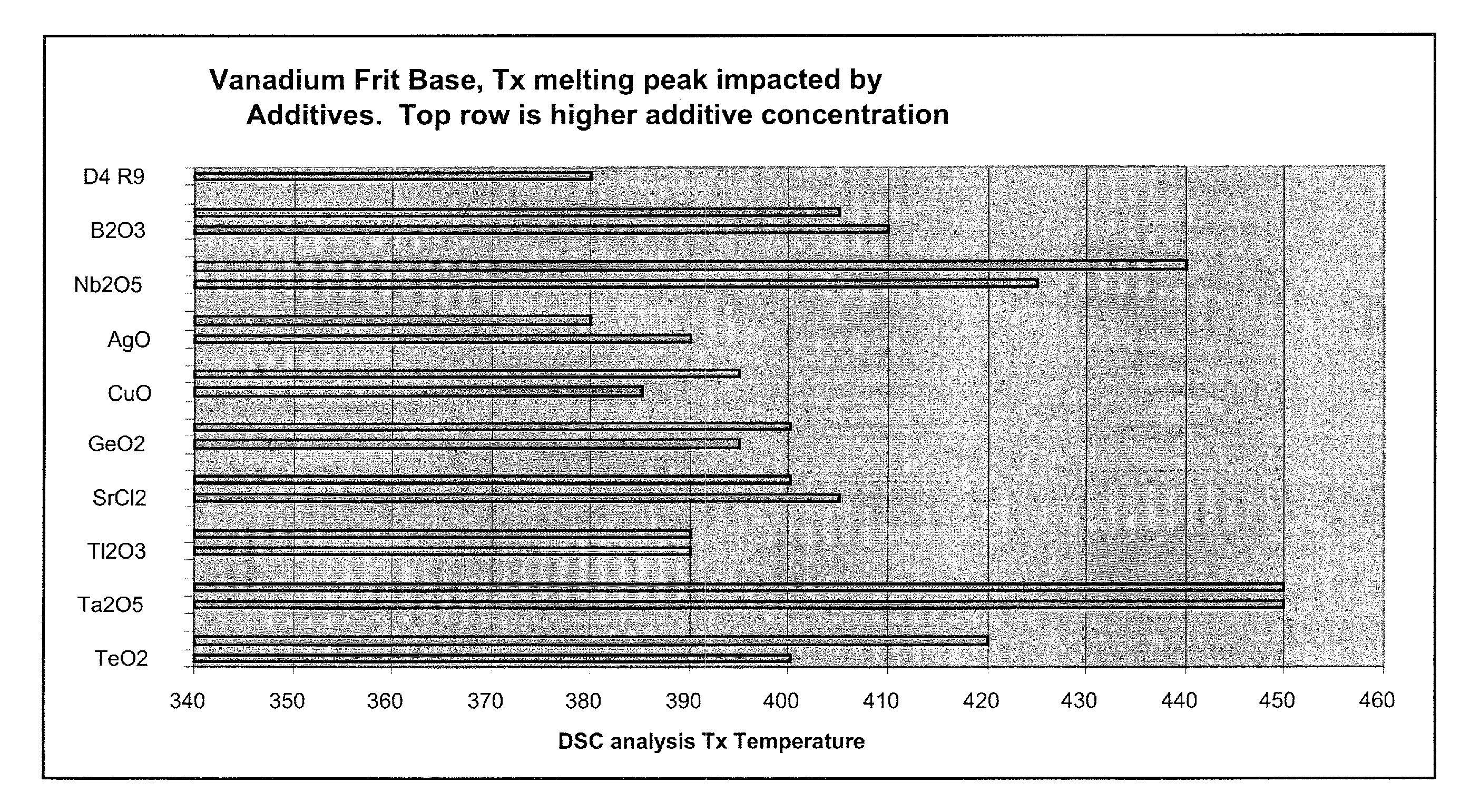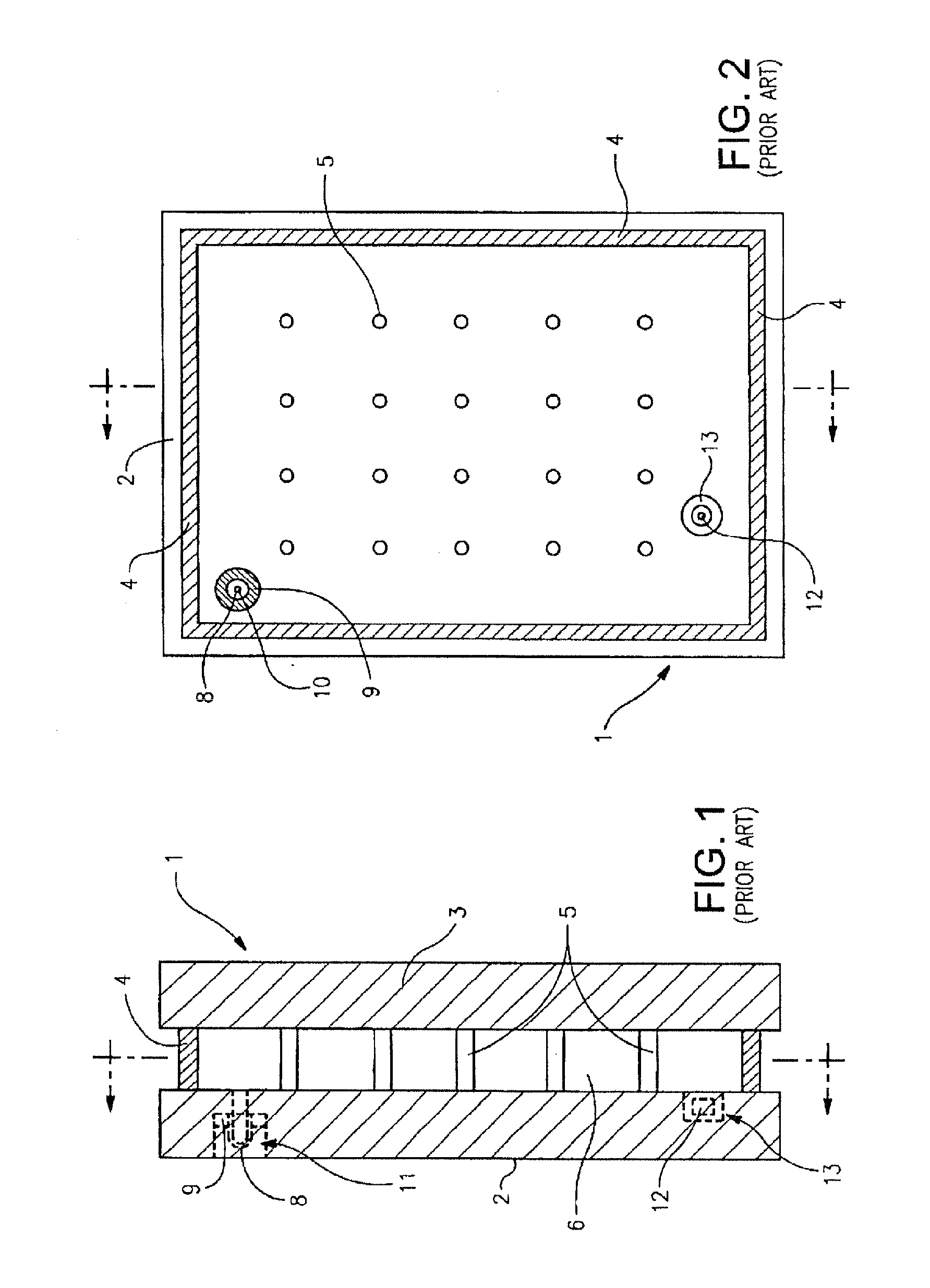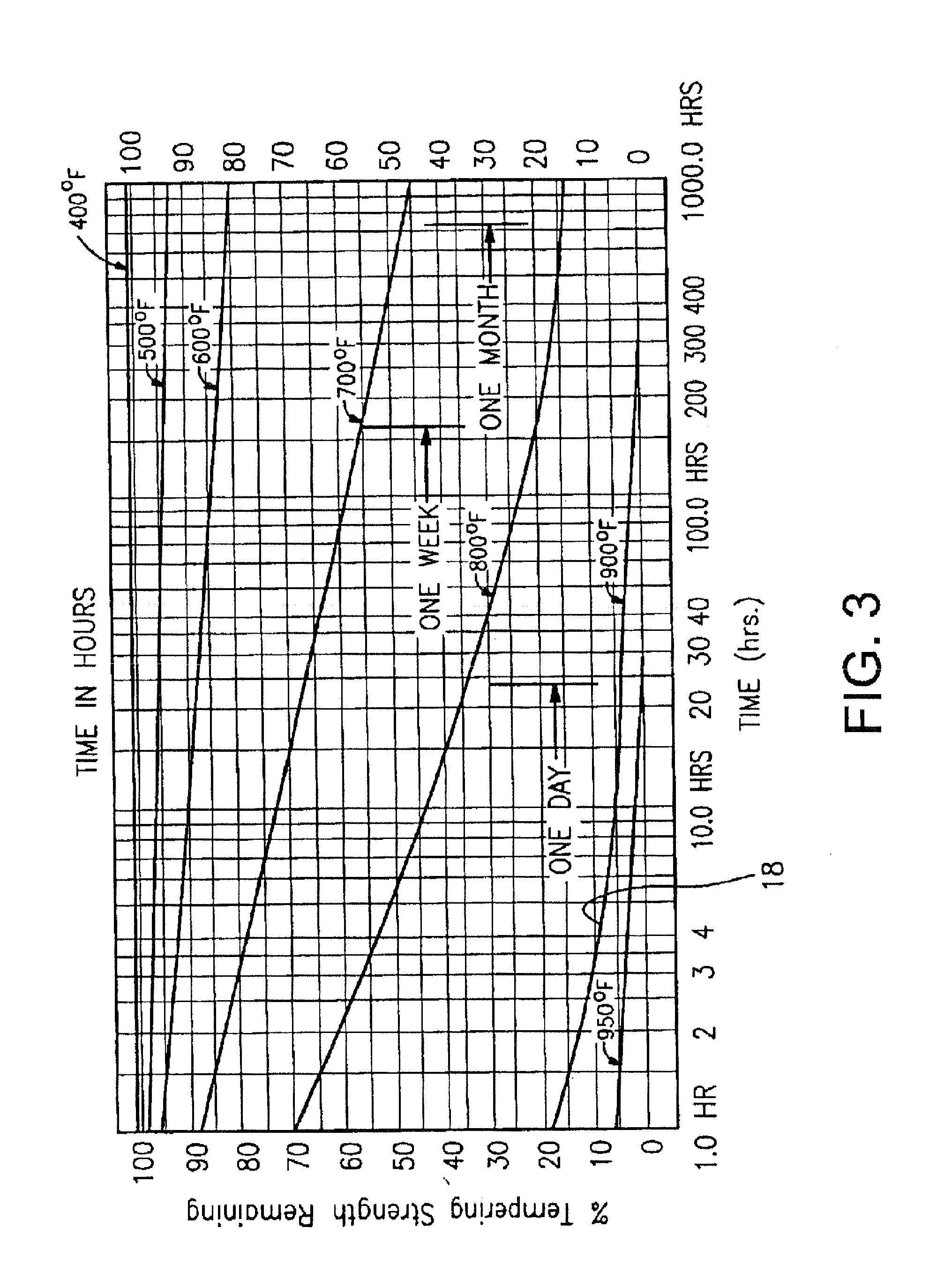Vanadium-based frit materials, binders, and/or solvents and methods of making the same
a technology of vanadium-based frit and binders, which is applied in the direction of glass making apparatus, manufacturing tools, and parallel plane units, etc. it can solve the problems of significant loss, adversely affecting certain low-e coating(s), and high temperature of the entire assembly used in the formulation of edge seals. b>4/b>, so as to improve the matching of frit and glass expansion, improve the effect of melt flow and improved seals
- Summary
- Abstract
- Description
- Claims
- Application Information
AI Technical Summary
Benefits of technology
Problems solved by technology
Method used
Image
Examples
example 1
[0099]A methyl cellulose polymer binder. Example 1 included 0.75 wt % methyl cellulose (400 cps molecular weight polymer) in DI water. TGA analysis of this material indicated a burn out of the binder at around 320-380° C.
example 2
[0100]A polyethylene carbonate binder, for example, [CH2CH2OCO2]n or C3H4O3. One example of such a binder is available under the material trade name QPAC® 25 from Empower Materials Inc. It will be appreciated that other carbonate inclusive binder materials may be used in certain example embodiments.
example 3
[0101]A polypropylene carbonate binder, for example, [CH3CHCH2OCO2]n or C4H6O3. One example of such a binder is available under the material trade name QPAC® 40 from Empower Materials Inc. As noted above, in FIG. 13, TGA analysis of these examples 2 and 3 indicated that the burnout of the binder material may be around 250-275° C.
[0102]The examples shown in FIGS. 14B, 15B, 16B, and 17-19 included a 5:1 (gram) ratio fit-to-binder solution. These were dried into layers on microscope slides, and the slides were placed on a 71 / 38 coated glass. It will be appreciated that this ratio of frit to binder solution is given by way of example and that other ratios may be used. For example, the ratio may be between ratios of 4:1 and 6:1.
[0103]FIGS. 14A, 15A, and 16 are temperature vs. time graphs that each show various temperatures at varying times of an example frit material, a duct temperature (e.g., where the IR energy is applied), and two glass substrates that are respectively coated (e.g., w...
PUM
| Property | Measurement | Unit |
|---|---|---|
| Mass | aaaaa | aaaaa |
| Mass | aaaaa | aaaaa |
| Mass | aaaaa | aaaaa |
Abstract
Description
Claims
Application Information
 Login to View More
Login to View More - R&D
- Intellectual Property
- Life Sciences
- Materials
- Tech Scout
- Unparalleled Data Quality
- Higher Quality Content
- 60% Fewer Hallucinations
Browse by: Latest US Patents, China's latest patents, Technical Efficacy Thesaurus, Application Domain, Technology Topic, Popular Technical Reports.
© 2025 PatSnap. All rights reserved.Legal|Privacy policy|Modern Slavery Act Transparency Statement|Sitemap|About US| Contact US: help@patsnap.com



